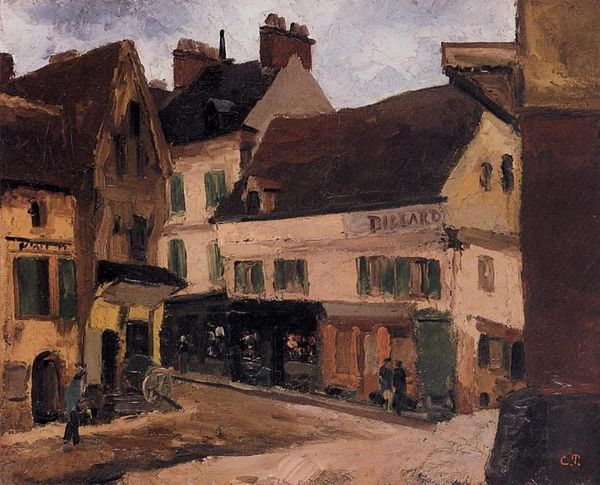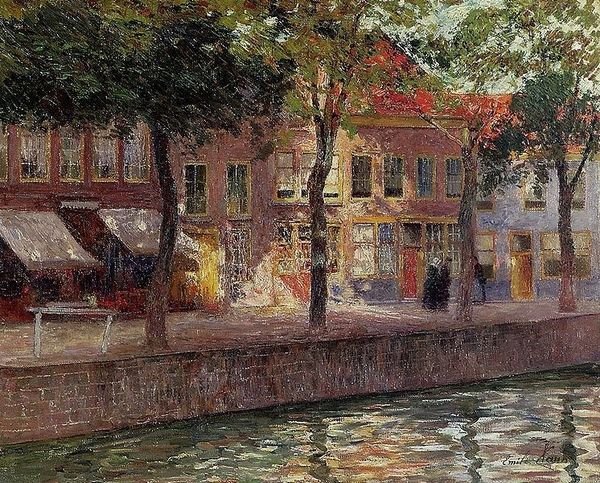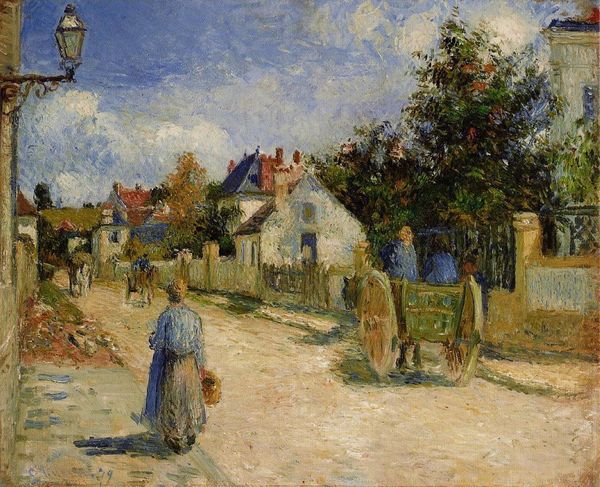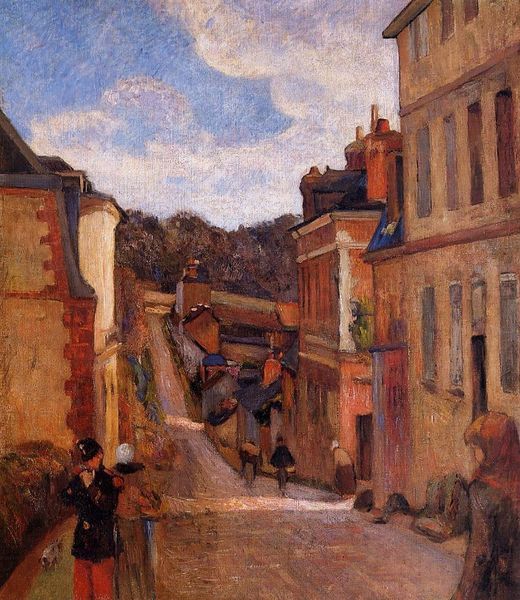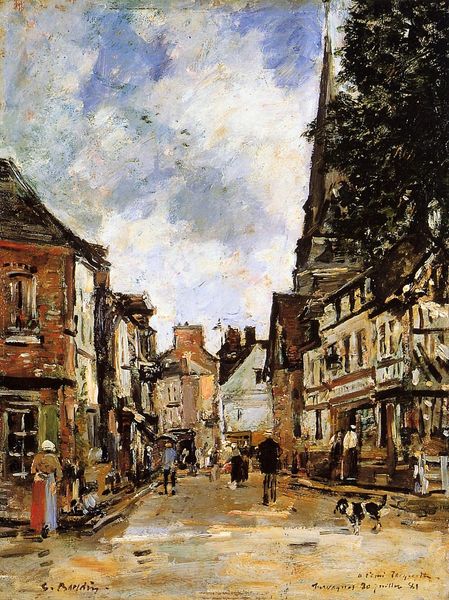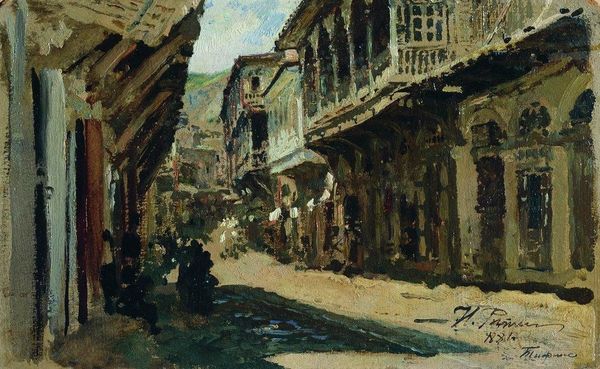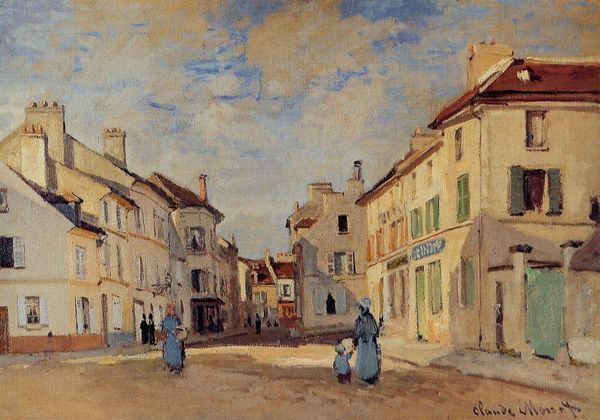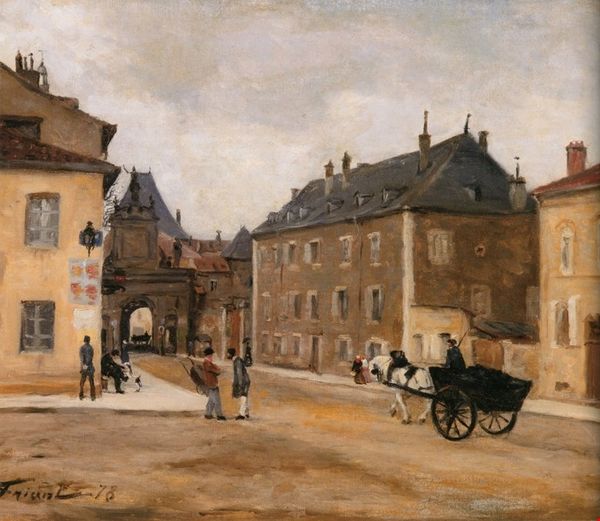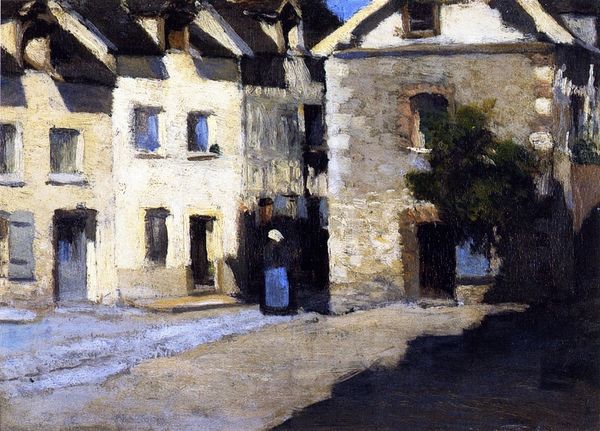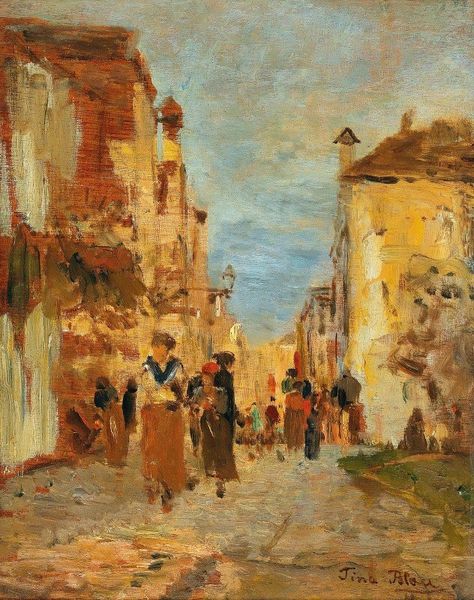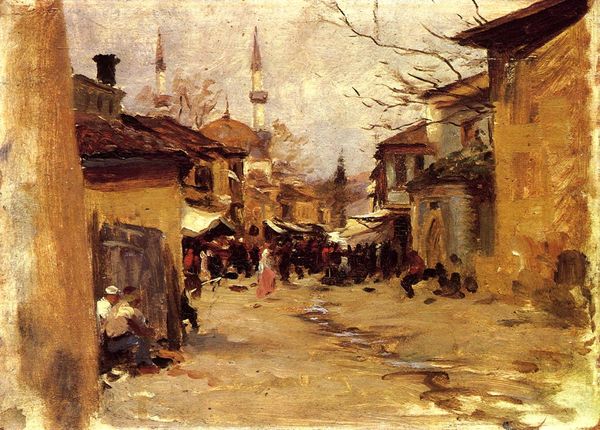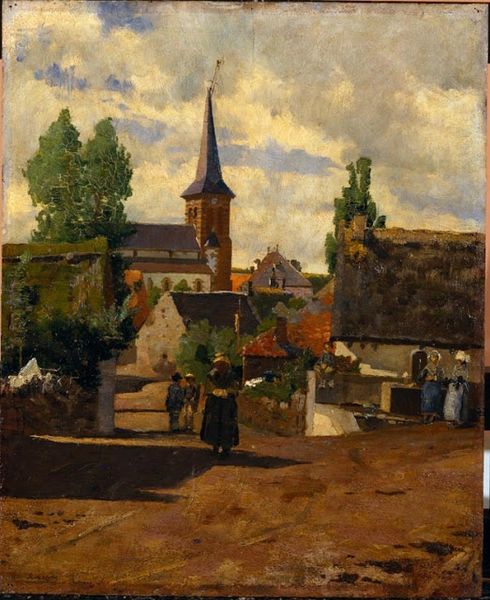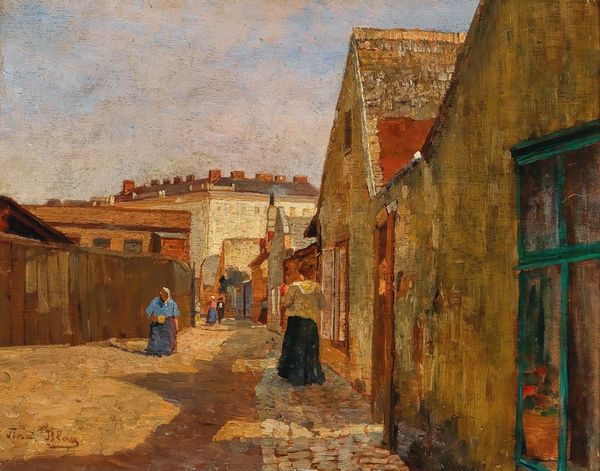
Dimensions: 25.4 x 30.48 cm
Copyright: Public domain
Curator: Let’s take a closer look at William Merritt Chase's “The Red Roofs of Haarlem," painted around 1903. He captured this city view en plein air, or outdoors, focusing on the everyday street life. Editor: Oh, the ochre! It dominates. Such a muted palette, almost as if the buildings themselves are exhaling dust and warmth simultaneously. There's a softness there that's surprisingly inviting. Curator: Chase’s impressionistic brushstrokes and interest in light lend it that airy quality, but look closer at the construction itself. The red-tiled roofs – they become this binding element, tying the whole composition together. The brushstrokes feel rapid and practical to me. Editor: Practically poetic, perhaps! But practically…laborious, no? All those individual strokes, the sheer physicality of laying down that oil paint to evoke fleeting light, it speaks to the craftsman’s hand, the artist as a maker wrestling with his materials. The red feels less about visual poetry, and more a function of the industrial production of pigment, a common element. Curator: It’s true. The materials tell their own story about that era. The use of the en plein air technique brings such immediacy; capturing fleeting impressions became popular during this era as paint became commercially accessible to more artists.. There's a distinct sense of transience here, of a specific moment captured. The way the light hits those red roofs…beautiful! Editor: A moment undeniably shaped by consumer culture though, isn't it? The accessibility of paint altered production methods; It raises questions for me regarding the purpose of high and low culture. And those flowers spilling from the window boxes, little splashes of color and the signs of leisure? Those add some charm and are part of a manufactured experience that sells an impression. Curator: Possibly, or he just loved the contrast of their texture against the rough brick! Chase was clearly trying to capture something beyond mere documentation of Haarlem. It's more like a feeling, a gentle nostalgia for a place he found beautiful. Editor: Nostalgia sells, after all. I'm less drawn to sentiment and more to the unsentimental truth: art-making embedded in the business of art, materials bought, paintings sold, and aesthetic visions inevitably entwined with economics. Curator: Maybe, but I leave with the sun-baked roofs of Haarlem bathed in the amber of time itself. And just the memory of an artist chasing fleeting beauty. Editor: And I see that amber too—but infused with the knowing glimmer of the marketplace. Food for thought as we move on to the next exhibit!
Comments
No comments
Be the first to comment and join the conversation on the ultimate creative platform.
